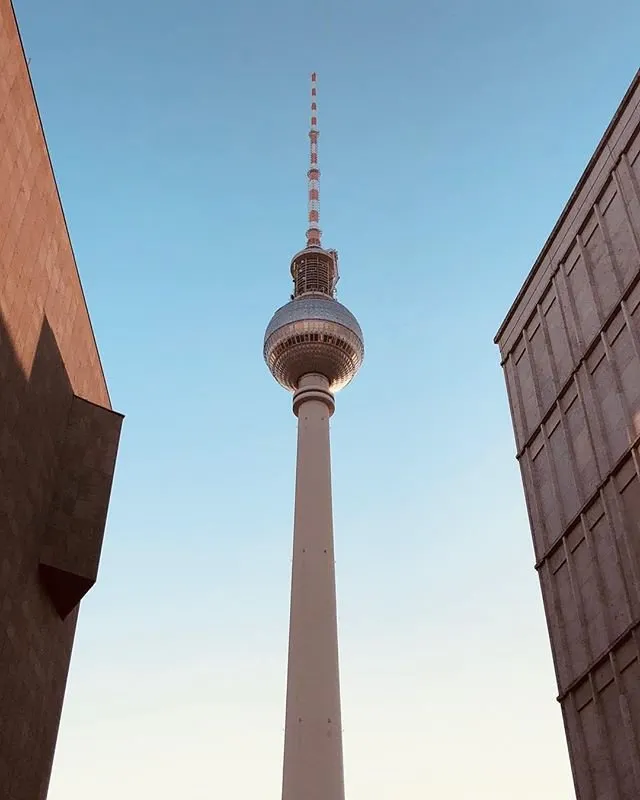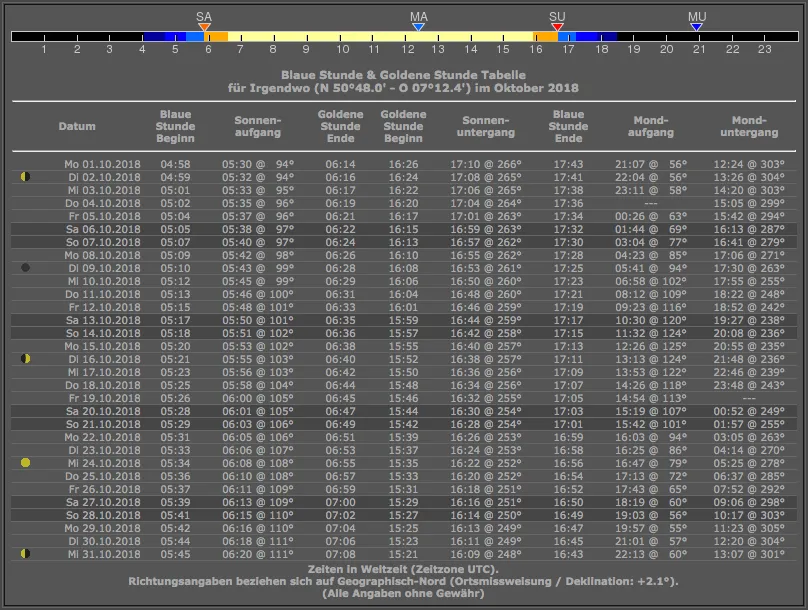Eine Frage, die sich leider nicht einfach so in einem Kommentar erklären lässt @meluni, darum habe ich da mal was vorbereitet 😉
A question that unfortunately can't be explained in a comment @meluni, so I've prepared something for you 😉
Ganz plump gesagt:
- Die Blaue Stunde hat nichts mit einem übermäßigen Konsum alkoholischer Getränke zu tun 🍻
- Sie dauert noch nicht einmal wirklich eine ganze Stunde und
- an einem Tag gibt es sie gleich zwei mal 🤗
To put it bluntly:
+ The Blue Hour has nothing to do with an excessive consumption of alcoholic beverages 🍻
+ It doesn't even really last a whole hour, and
+ on one day there are them two times 🤗
Mit meinen eigenen Worten erklärt, ohne zu recherchieren (was ich aber gleich noch mache):
- Es sind sehr kurze Phasen (ca. 20 Minuten), wo das Licht sehr besonders "erscheint".
- Jeweils kurz
nachvor dem eigentlichen Sonnenaufgang und kurzvornach dem eigentlichen Sonnenuntergang. - Bevor bzw. nachdem der Himmel so richtig rot wird, erscheint er für eine gewisse Zeit unnatürlich blau.
Explained in my own words without doing any research (which I will do in a moment):
+ There are very short phases (about 20 minutes), where the light is very special.
+ Each shortly after the actual sunrise and shortly before the actual sunset.
+ Before or after the sky becomes really red, it appears unnaturally blue for a certain time.
Bevor es ernst wird - schau mal, noch ein Blaue Stunde Bild 😉
Before it gets serious - look, another blue hour picture 😉

Instagram: kapuzenteddy
Jetzt aber mal zu den Fakten:
Folgendes habe ich gleich bei der ersten Suche gefunden -> Dämmerungsrechner
Wenn du dort deinen Wohnort eingibst, bekommst du diese Übersicht:
But now to the facts:
I found the following in the first search -> twilight calculator
If you enter your place of residence there, you will get this overview:

Interessanterweise ist hier auch die Goldene Stunde vermerkt (die aber jetzt keine Rolle spielen soll 😝).
Interestingly enough, the Golden Hour is also noted here (which is not supposed to play a role now 😝).
Wikipedia sagt im Übrigen dazu folgendes:
Das Himmelsblau während des Tages wird durch die Rayleigh-Streuung verursacht, aufgrund derer mehr Licht kürzerer Wellenlänge – also blaues Licht – gestreut wird. Wenn das Sonnenlicht im Verlauf der Dämmerung immer schräger einfällt und einen längeren Weg durch die Erdatmosphäre nimmt, ist immer mehr Licht bereits herausgestreut, bevor es den Himmel über dem Ort der Dämmerung erreichen kann. Da dies insbesondere für das blaue Licht gilt, würde das dazu führen, dass der Himmel im Zenit nach Sonnenuntergang eher gelblich oder grünlich wäre. Mit dem schrägen Lichteinfall hat das Licht aber auch einen längeren Weg durch die Ozonschicht in 15 bis 30 Kilometer Höhe, weshalb die Chappuis-Absorption zum Tragen kommt, die sich während des Tages nicht bemerkbar macht, da sie deutlich schwächer als die Rayleigh-Streuung ist.[Wiki]
Wikipedia says the following about this:
The sky blue during the day is caused by the Rayleigh scattering, which scatters more light of shorter wavelength - blue light. If the sunlight falls more and more obliquely in the course of the twilight and takes a longer way through the earth's atmosphere, more and more light is already scattered out before it can reach the sky over the place of the twilight. Since this is especially true for the blue light, it would result in the sky at its zenith being more yellowish or greenish after sunset. With the oblique incidence of light, however, the light also has a longer path through the ozone layer at an altitude of 15 to 30 kilometres, which is why the Chappuis absorption comes into play, which is not noticeable during the day, as it is significantly weaker than the Rayleigh scattering.[Wiki].
Liebe Grüße 🙋🏼♂️